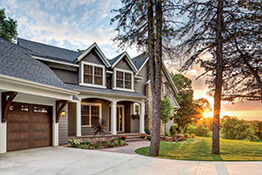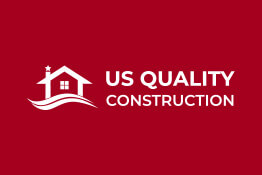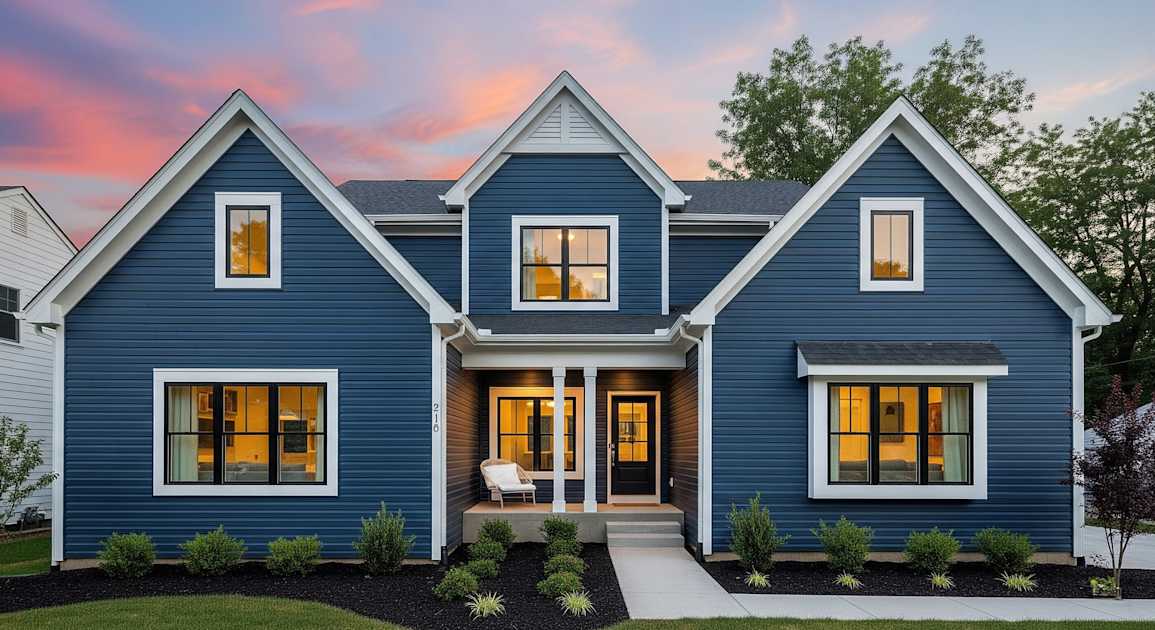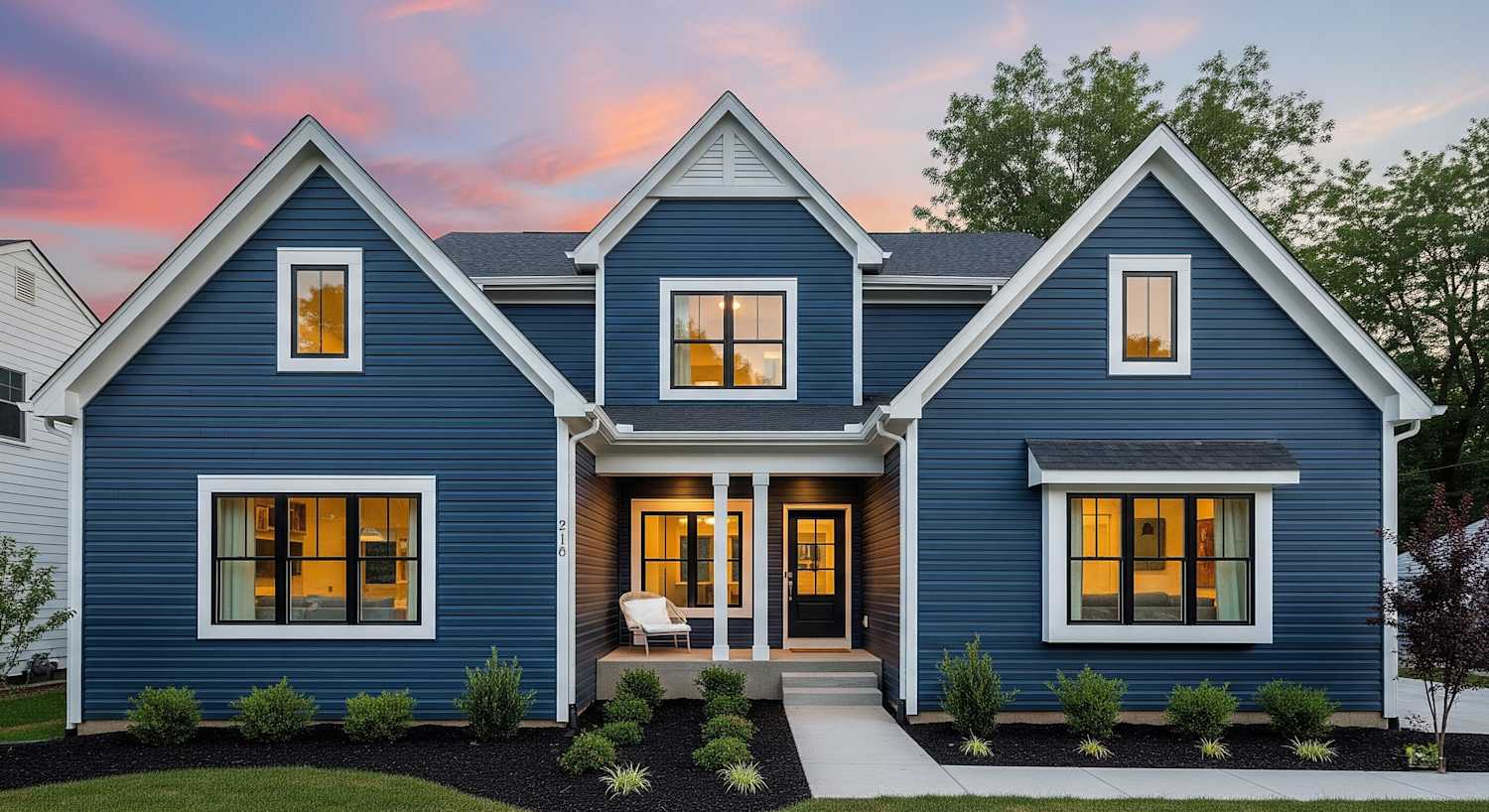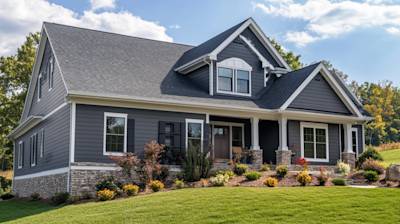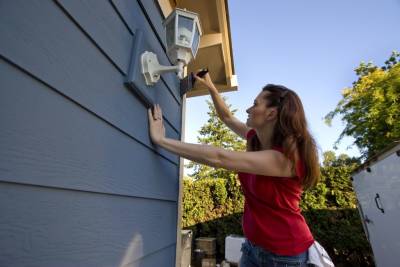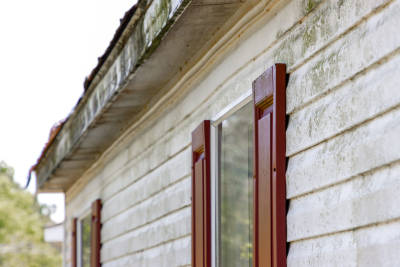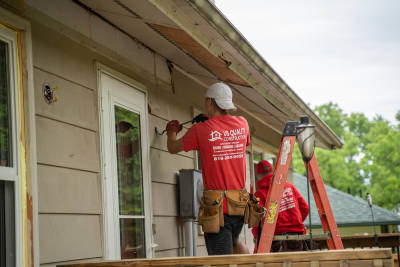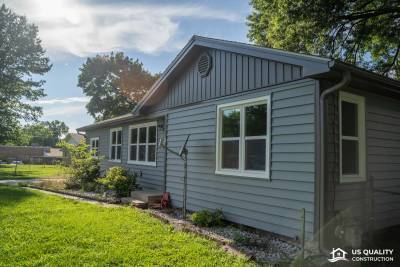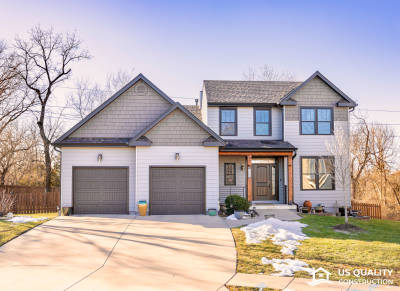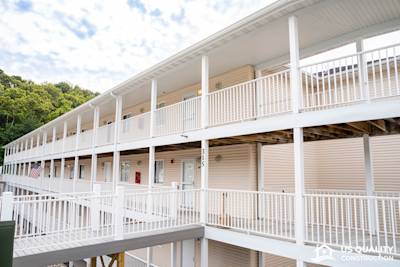Riding the wave of sustainable, affordable, and aesthetically pleasing home exteriors, vinyl siding stands tall as a preferred choice for many homeowners. When it comes to a comprehensive study of the vinyl siding cost, multiple variables come into play. Considering key considerations like material, labor, and the size of the project, this blog aims to provide you with a thorough understanding of the cost of vinyl siding in detail.
Overview of Vinyl Siding
Vinyl siding has surged in popularity over the years due to its cost-effectiveness, durability, and low maintenance requirements. Being an engineered product, it is available in an array of colors, styles, and textures, giving homeowners the freedom to choose as per their aesthetic preferences.
Factors Influencing Vinyl Siding Cost
When it comes to determining vinyl siding cost, a handful of factors contribute to the final bill.
Material Cost
The cost of the material itself heavily influences the overall cost.
- Siding Type: A myriad of vinyl siding options such as shakes, scallops, traditional lap siding, and vertical siding, along with various grades and thicknesses, are available in the market, each differing in cost.
- Manufacturer: The brand of siding you choose can also inflate the cost. Premium brands offer higher quality, durability, and better warranty conditions, but come with a heftier price tag.
Project Size
Another key influencer is the size and complexity of the siding project.
- Square Footage: The more square footage to cover, the higher the material and labor costs will be.
- Complexity: Complex installations with numerous corners, windows, and doors require more detailed work, hence driving up costs.
Labor Cost
While vinyl siding installation can be a DIY project, professional installation is often recommended for best results. The cost varies depending on location and the complexity of the project.
- Contractor Fees: Depending on the contractor's experience and reputation, their labor charge can fluctuate.
- Geographic Location: Labor costs can also vary widely by region.
Estimating Vinyl Siding Cost
To budget accurately for the siding project, it's necessary to understand how to calculate the cost. Though the price can fluctuate, here is a rough estimation.
Material Estimation
On average, vinyl siding costs around $3 to $7 per square foot.
Here are the steps to estimate the material cost:
Measure your house: Determine the square footage that needs siding.
Choose your siding: Select the type, style, and brand of vinyl siding you prefer.
Multiplication: Multiply the square footage by the cost per square foot of the chosen vinyl siding.
Labor Estimation
Labor cost typically runs between $1 and $3 per square foot. However, highly experienced contractors or complex jobs may increase this rate.
To calculate labor costs, use the following steps:
Determine complexity: Assess the complexity of the job based on doors, windows, and overall structure.
Find a contractor: Interview multiple contractors to get an average cost estimate.
Multiplication: Multiply the square footage by the contractor's rate.
Price Comparison of Different Types of Vinyl Siding
Understanding the cost of different types of vinyl siding can help make an informed decision.
- Basic Vinyl Siding: Ranging from $3 to $6 per sq. ft. including installation, basic siding provides durability without breaking the bank.
- Premium Vinyl Siding: This higher quality siding ranges from $4.50 to $10 per sq. ft. With better thickness and design options, it provides a natural wood-like appearance.
- Insulated Vinyl Siding: Costing between $5 and $12 per sq. ft., this siding adds thermal insulation to improve your home's energy efficiency.

Frequently Asked Questions about Vinyl Siding Cost
Does the vinyl siding cost cover its installation?
Generally, vinyl siding cost listed by various suppliers only covers the cost of the material itself. Installation is a separate cost and can vary quite a bit based on the specifics of your home including its size, and complexities like number of windows, corners and detailing work. Installation charges can run from $1 to $3 per square foot.
What components form the major part of the vinyl siding cost?
Vinyl siding cost is typically broken down into several components. These include the cost of the material itself which includes the vinyl siding panels, costs related to installation such as labor and additional supplies needed, and other project-specific factors like permits, dumpster rental for disposal of old siding, etc.
Does upgrading to better quality increase the vinyl siding cost significantly?
Yes, upgrading to a higher-quality vinyl siding can significantly increase the cost. High-grade vinyl siding is thicker and hence, more durable and long-lasting. It also often comes with enhanced UV protection and better color retention. These benefits come at a price, so you can expect to pay more for high-grade vinyl than you would for builder-grade or mid-grade vinyl siding.
Is it cheaper to paint my house or replace siding with vinyl?
The answer to this depends on your current situation. If your current siding is in poor shape with cracks, leaks, or other physical damage, painting over it won't improve the condition and replacing it with vinyl may be the more cost-effective option in the long run. However, if your siding is still in good condition, a fresh coat of paint can be a cheaper way to revitalize the appearance of your home.
Are there any other significant costs besides material and installation in the vinyl siding cost?
While material and installation are the major portions of the vinyl siding cost, there are few other significant costs to consider. Disposal of the old siding is one such aspect. You will also need to factor in the cost of obtaining necessary permits for your siding project which can add a few hundred dollars to your budget.
Is there a way to save money on vinyl siding cost?
Absolutely, there are a few different ways to potentially lower your vinyl siding cost. You could save money by removing the old siding yourself instead of paying for disposal, or you could look for sales and deals on materials. Another common approach is to get estimates from multiple contractors to ensure you're getting a competitive installation price.
How does vinyl siding cost compare with other siding materials?
When it comes to comparing vinyl siding cost with other siding materials like wood, metal, or fiber cement, vinyl siding tends to be the most cost-effective option. It is typically cheaper not just in terms of material cost, but also installation and maintenance, making it a popular choice for those on a budget.
Do different types of vinyl siding have different costs?
Yes, the cost of vinyl siding can vary quite significantly depending on the type and quality. For instance, insulated vinyl siding costs more than non-insulated versions due to the added material and benefits. Similarly, traditional lap siding is typically cheaper than other styles like shake or scallop.
How does the color of the vinyl siding reflect on the cost?
While most standard colors of vinyl siding won't vary greatly in cost, custom colors or finishes could potentially raise the price. It's worth noting that lighter colors tend to reflect sunlight better and might help keep your home cooler, which could potentially lower your energy costs in the long run.
Does vinyl siding cost vary regionally?
Yes, location can impact the vinyl siding cost. Factors such as the standard cost of living in your area, the local climate, and even the complexity of the job (such as whether your home is one or two stories) can all affect the overall cost.
Pros of Vinyl Siding Cost
Affordability
One of the most significant advantages of vinyl siding is its cost. When compared to other siding materials like wood, brick, or stucco, vinyl tends to be much cheaper. It offers cost savings without sacrificing the appearance of quality, making it an excellent choice for homeowners who want to renovate on a budget.
Low Installation Cost
Vinyl siding is lightweight and easy to install which significantly reduces labor costs. Unlike other materials that may require specialized tools or professional installation, vinyl siding can often be installed by the homeowner themselves, saving additional costs in labor.
Low Maintenance Cost
The maintenance cost of vinyl siding is relatively low compared to other materials. It doesn't need painting or staining like wood. Its color doesn't fade over time like painted materials. Simply cleaning it once or twice a year with water and a mild detergent is usually enough to maintain its look.
Cost-effectiveness Over Time
Over its lifespan, vinyl siding can prove to be more cost-effective than other materials. Due to its durability, there's little need for expensive repairs or replacements. The low maintenance requirements also help to keep long-term costs down.
Cons of Vinyl Siding Cost
Upfront Investment
Even though vinyl siding tends to be more economical in the long run, it does require an upfront investment. The actual cost will depend on the size, style, and brand, and while it is generally more affordable than other siding materials, it can still be expensive for some homeowners.
May Not Add to Property Value
While vinyl siding can improve the curb appeal of a house, it may not significantly increase a property's value. Some potential buyers may view it as a cheaper material and this could reflect on their perception of the home's overall value.
Possibility of Hidden Costs
There can be some hidden costs associated with vinyl siding. For instance, if your home's exterior walls are not in good shape, you may need to pay for repairs or preparations before the siding can be installed. This could add to the overall costs considerably.
Potential Increase in Insurance Costs
Some insurance companies may raise your home insurance premiums if you install vinyl siding. This is because, though it is long-lasting, it can be damaged by severe weather conditions like hail or heavy wind. The cost of replacing vinyl siding can be high, leading to an increase in insurance costs.
Not As Durable As Other Materials
While vinyl siding is resistant to rot, corrosion, and termites; it's not invincible. It can crack or break upon impact, especially in areas with extreme weather conditions like heavy snowfall or extreme heat. The repair or replace cost for damaged vinyl siding can add to your expenses.
Environmental Impact
While it isn't a direct cost, it is worth considering the environmental toll of vinyl siding. It is not very eco-friendly as the process of manufacturing vinyl releases harmful substances into the environment. Additionally, once it reaches the end of its life cycle, it can harm the environment if not correctly disposed of. This could represent a hidden cost for homeowners who prioritize sustainability.
Myths and Misconceptions about the Cost of Vinyl Siding
Vinyl siding has become a popular choice among homeowners looking to sidetheir homes. However, there exists numerous misconceptions about the cost of vinyl siding. In this section, we aim to dispel these myths and give you a clear understanding of what to expect when deciding to install vinyl siding on your home.
Myth 1: Vinyl Siding is Too Expensive
Misconception: Vinyl siding costs a fortune
In reality, the cost of vinyl siding is about the same or even less than other types of siding. This misconception is likely due to comparisons drawn with the cheapest form of siding—painted aluminum or wood. When compared to higher quality, longer lasting options such as stone or brick, vinyl is significantly less expensive.
Misconception: High maintenance costs add up
Another perception that tends to make homeowners think vinyl siding is costly is regarding maintenance. In truth, vinyl requires minimal maintenance. It does not need to be painted or stained, and a simple wash with soap and water will keep it looking new. These low maintenance requirements translate into significant cost savings over time.
Myth 2: Cheap Vinyl Siding is Just as Good
Misconception: All vinyl siding is the same
Just like any other product, quality varies widely in vinyl siding. Some types of vinyl siding are more durable, better insulated, and resist impacts, UV rays, wind and water better than others. You may initially save money by opting for cheaper vinyl siding but it might end up being more expensive in the long run due to replacements, repairs, and higher energy bills.
Myth 3: Vinyl Siding is Only for Cheap Homes
Misconception: Vinyl siding devalues a home
This myth is simply not true. Today, vinyl siding is available in various styles, textures, and colors. This versatility allows vinyl siding to mimic more expensive materials like wood or stone, thus enhancing the aesthetic appeal and value of a home. There is no proven correlation between vinyl siding and a depreciated property value.
Myth 4: Vinyl Siding Traps Water
Misconception: Because vinyl siding is not breathable, it traps moisture
Proper installation of vinyl siding does not lead to moisture problems. Most vinyl siding systems are designed to let water that gets behind the siding drain away and allow the wall underneath to dry out by incorporating weep holes and channels.
Myth 5: Vinyl Siding is Bad for the Environment
Misconception: Vinyl siding is not eco-friendly
Actually, vinyl siding scores well on environmental efficiency. It is lighter than other types of siding, so it requires less energy to transport. It is also durable, leading to a longer product lifecycle and less need for replacement. Furthermore, today's vinyl siding products are often recyclable, and many manufacturers use recycled materials in their production.
Myth 6: Vinyl Siding Never Needs to be Replaced
Misconception: Vinyl siding lasts forever
While it is true that vinyl siding lasts a long time, it is not immune to damage and aging. Certain conditions like extreme weathers or accidents can cause the vinyl to crack, fade or warp necessitating replacements. Hence, it's essential to factor in the potential need for repairs, or even replacement over the lifespan of the siding when considering costs.
It's important to go beyond the myths when making decisions about vinyl siding. Making an informed choice will help you find the right balance between cost, aesthetics, durability, and environmental impact. By doing so, you can enjoy the long-term benefits of this popular home improvement material.
Summary
As we've chatted about, the vinyl siding cost can vary based on various factors. It's more than just the price of the material. The cost can increase due to the style, color, and insulation options you choose. Not to forget, labor charges significantly add to the total expense. Therefore, it is important that homeowners know the factors affecting the cost so they can plan their budget accordingly.
When it comes to one's home, everyone wants the best within their budget. While vinyl siding isn't free, it's a smart investment for those looking for a long-term, low-maintenance solution. A higher upfront vinyl siding cost might well be worth it if you don't want to deal with repainting or repairing damage every few years. In fact, in the long run, it could turn out to be more cost-effective than other options.
Despite the varying costs, it’s safe to say that vinyl siding is a choice that offers great bang for the buck. You get a range of design choices and a durability that's tough to beat, without the cosmetic maintenance woods or metals might require. With the vinyl siding cost factored in, it’s a choice that packs quite a punch for homeowners who want value, aesthetic appeal, and durability.
About US Quality Construction
US Quality Construction in Kansas City, Missouri is your trusted partner for all your construction, renovation, and remodeling needs. With decades of accumulated experience, every member of our team brings a wealth of knowledge and a passion for quality craftsmanship. Being a locally owned business, we're proud to serve our neighbors throughout the Kansas City metro area. We firmly believe in the importance of transparent communication and providing personalized attention to each client. So, let's turn those dream projects into reality. Join us and experience construction like never before!
Tags: home improvement, exterior design, renovation,
